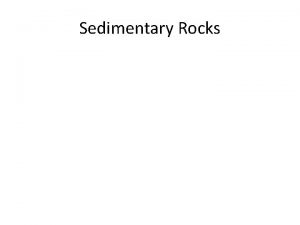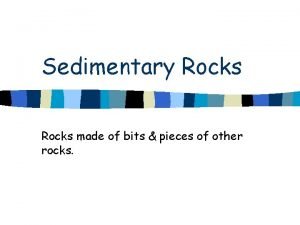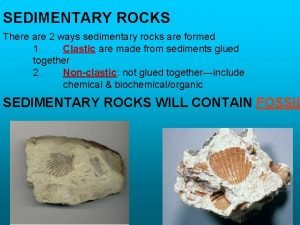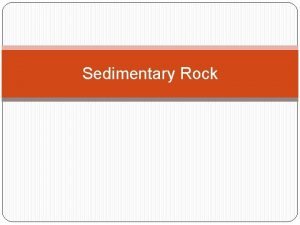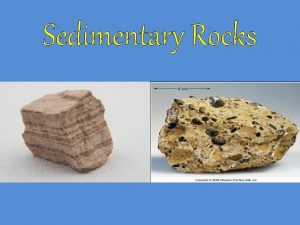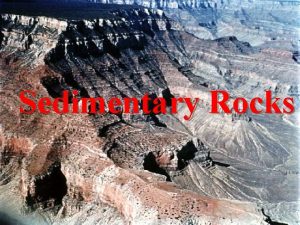Sedimentary Rock pg 30 Rock that formed through




- Slides: 4

• Sedimentary Rock (pg. 30) • Rock that formed through a sequence of processes: weathering, erosion, deposition, compaction and cementation. – weathering: effects of freezing & thawing, plant roots, acid and other forces on rock – Erosion: the process by which running water, wind, ice carry away bits of broken rock • Strata • Sediments come from weathering and erosion of igneous and metamorphic rock – even other sedimentary rock • Rock fragments – called sediment, make up sedimentary rock (pg. 37) • The layers of sedimentary rock • New layers of sediment are deposited and compressed – compacted • Minerals dissolve into natural glue • i. e. the Grand Canyon

• Composition of Sedimentary Rock • Clastic • Classified by the way it forms • 3 main catagories – Clastic – Chemical – Organic • Made from the fragments of other rocks & minerals • Fragments in clastic influence the names – i. e. sandstone, siltstone • Chemical • Forms solutions of minerals and water • i. e. Limestone is calcium carbonate – or calcite that is crystallized with sea water

• Organic • Most limestone forms from remains of animals that once lived in the ocean – Shells or skeletons (calcium carbonate) – Fossils are the remains or traces of plants or animals preserved in sedimentary rock – Fossils give us information about ancient life forms • Sedimentary Rock Structures • The way the rock is formed – Tells you a lot about the sedimentary rock

• Stratification • Layering of the rock • Different depending on size, kind & color of sediment • How fast the sediment is deposited also effects the stratification • Can be record of wind and water waves

